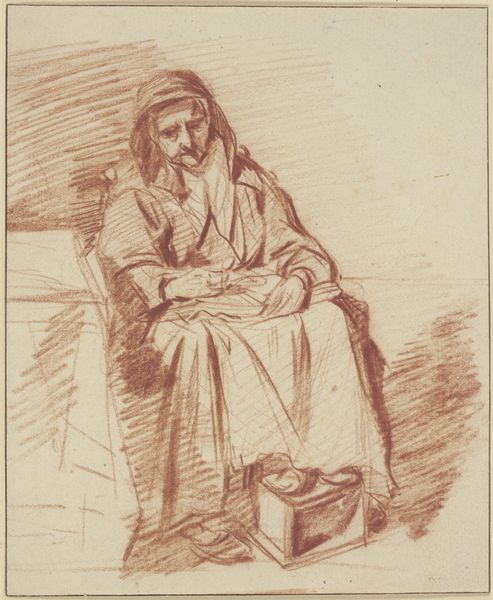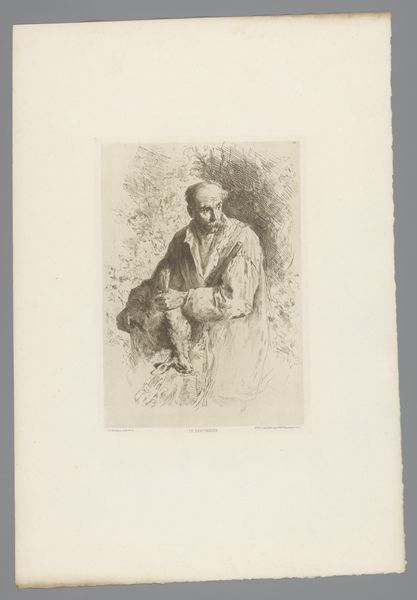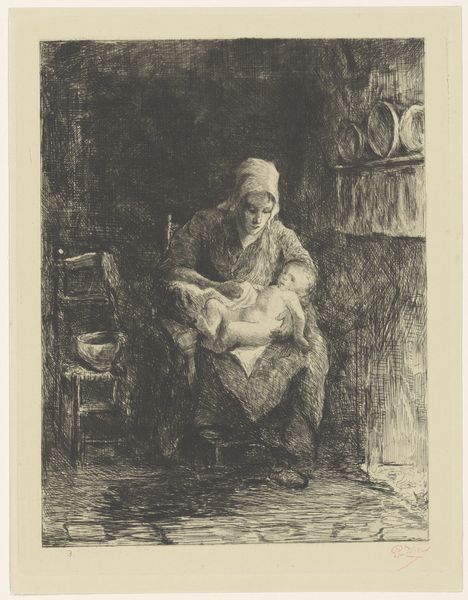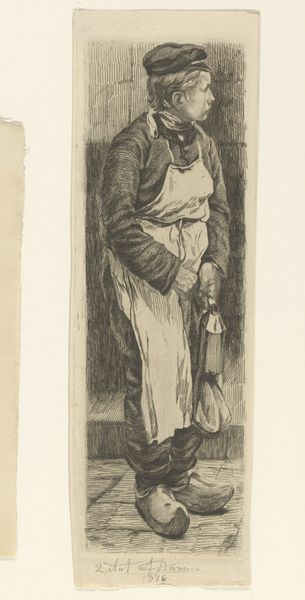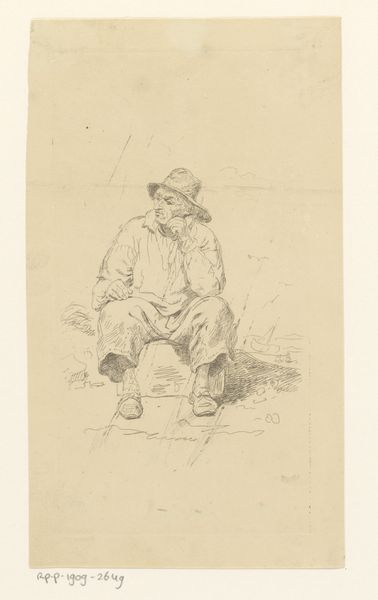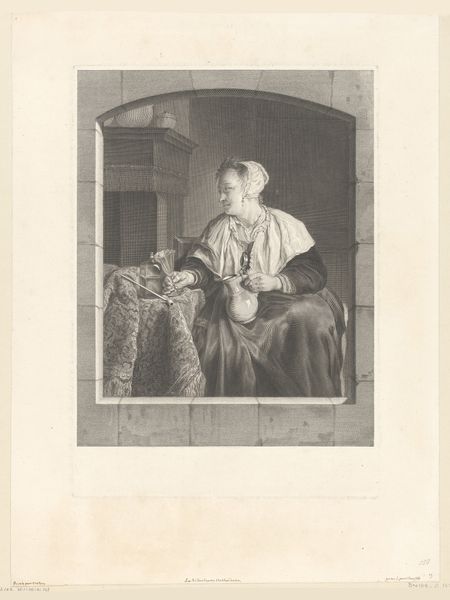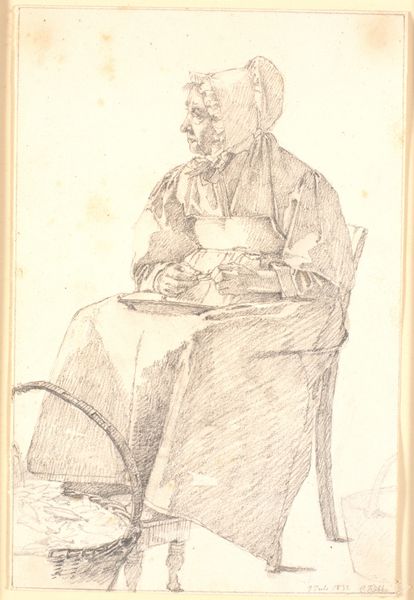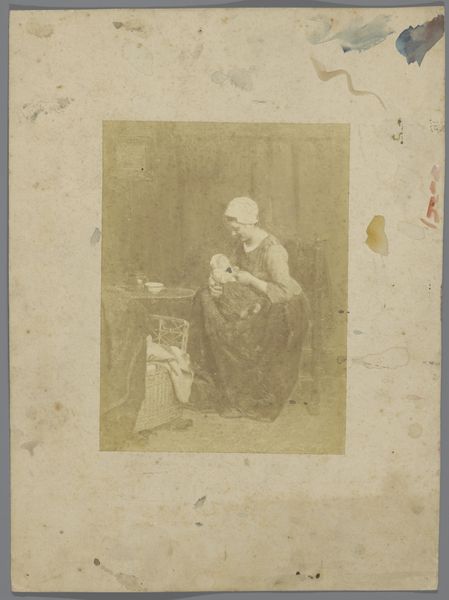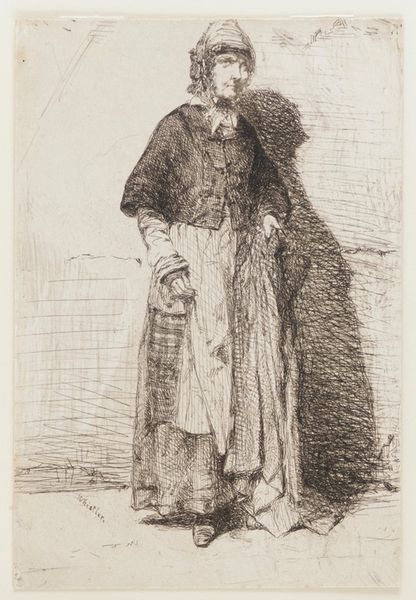
print, engraving
#
portrait
# print
#
figuration
#
portrait drawing
#
engraving
#
realism
Dimensions: 179 mm (height) x 128 mm (width) (plademaal)
Curator: What strikes you first about this image, before we even delve into its history? Editor: A profound stillness. The monochrome palette and the delicate etching lines give it an air of contemplation. It feels like witnessing a private moment, perhaps of reflection or resignation. Curator: That’s beautifully observed. This print, an engraving by Frans Schwartz titled "An Old Oriental Man", was created in 1899. It's currently housed here at the SMK, the National Gallery of Denmark. It represents an intriguing moment in European art when there was both deep curiosity and problematic projections onto non-Western cultures. Editor: "Oriental" is, of course, a charged term today. I’m immediately curious about the symbols and cultural connotations associated with the man’s clothing, posture, and the stick he's holding. Is it meant to convey wisdom, or perhaps a certain stereotype of the ‘wise old man’ from the East? Curator: That's a vital question. We have to consider this image within the framework of 19th-century Orientalism, Edward Said's theories are quite relevant here. How does Schwartz, a Danish artist, engage with or perhaps perpetuate preconceived notions about the "Orient" through this depiction? Editor: His long white beard certainly aligns with archetypal images of ancient wisdom. But the downward gaze, the clasped hands... these speak of vulnerability and perhaps dispossession. There’s a weariness etched into his face. I am wondering about visual motifs that are specific to the artist. Are there symbols familiar in Denmark, and are they being challenged by the orientalism in the content? Curator: Exactly, there is a tension here. The "Oriental" becomes a site where the artist explores his themes, of mortality and history. But to what extent is that exploration built on actual understanding, versus imposed narratives? I want to consider his relation to modern Europe as well, as an artist navigating nation and empire at the fin de siècle. Editor: It is as if he is not the subject of this image, but the very material in the hand of the artist; there is an important dialogue here between this single portrait and its use for cultural ideology in Denmark. Seeing the cultural legacy helps to inform our relationship with art. Curator: Absolutely. Viewing this work allows for an exercise of cultural criticism—an examination of representational politics in the late 19th century and beyond. It forces us to confront uncomfortable aspects of our own history, in how the west perceived and engaged with the East. Editor: A poignant reminder that images, no matter how seemingly simple, are never neutral. They carry within them layers of cultural baggage, open to endless interpretation.
Comments
No comments
Be the first to comment and join the conversation on the ultimate creative platform.



